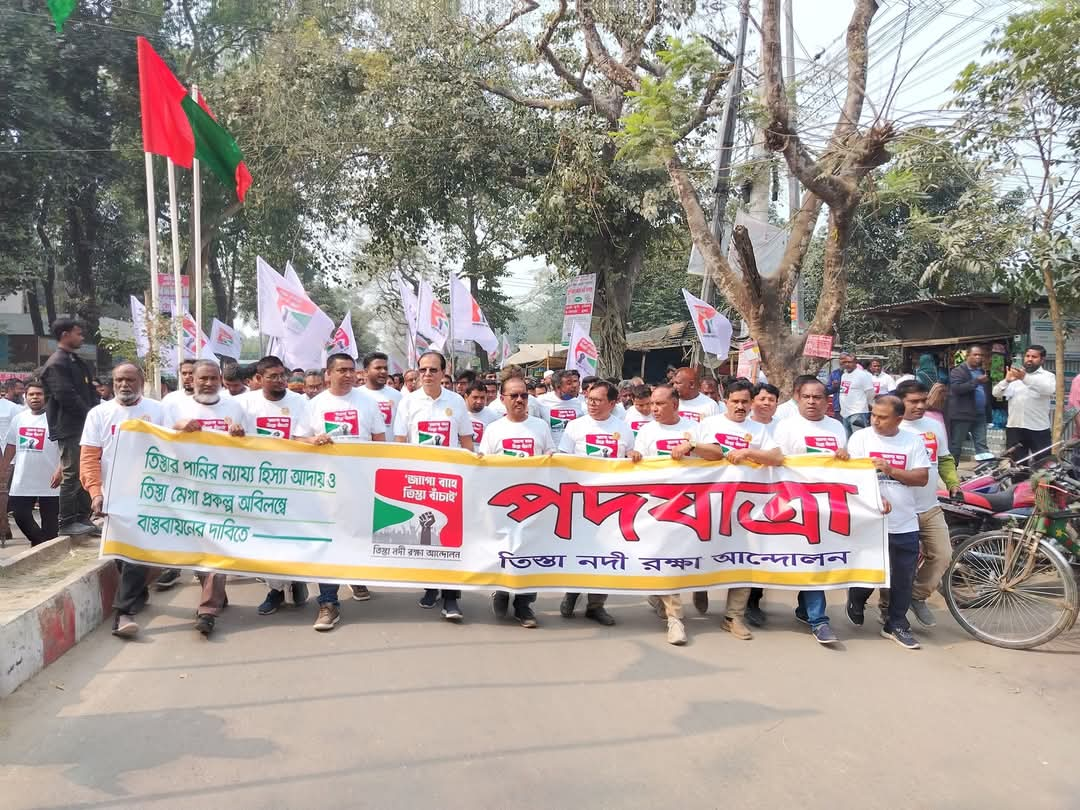News Flash
News Flash

LALMONIRHAT, Feb 11, 2025 (BSS) - Thousands of people joined a street march in the district town on Monday demanding a fair share of Teesta water and the implementation of the Teesta Mega Project.
Teesta River Protection Movement organized the programme with the theme "Jago Bahe Teesta Bachai".
The march starting at 12.30pm from the railway station road in the town, it was terminated reaching Mishon More after parading different streets of the town.
Teesta River Protection Movement Committee Chief Coordinator, BNP Organizing Secretary (Rangpur Division) and former deputy minister Principal Asadul Habib Dulu led the march.
According to the organizers, about 10,000 people joined the march with banners and festoons.
Speaking on the occasion, the speakers called for taking urgent steps to dredge the Teesta River, get a fair share of Teesta water and implement the Teesta mega plan.
From the march, the Teesta River Protection Movement announced to hold a sit-in programme on the banks of the Teesta for two days (48 hours) on February 17 and 18 to realise the demand.
It also announced to hold the sit-in programme at 11 places including Nilphamari, Kurigram, Lalmonirhat, Rangpur and Gaibandha districts at the same time.
In a leaflet printed on the occasion of the march, Asadul Habib said that the river is the main driving force of the life and livelihood of the people of the Rangpur region on the Teesta basin.
Once upon a time, the mighty Teesta was called the lifeline of this region, the leaflet read, adding, but due to the construction of dams upstream of the Teesta, it has become a dying river today.
The Teesta has now turned into a death trap for the people of this region during both the rainy and dry seasons, it said.
During the rainy season, water is released from the Indian dam without notice, flooding both banks of Teesta, endangering the public life, the leaflet read, adding, but during the dry season, the flow of Teesta drops to almost zero level.
As a result, miles upon miles of land on both sides of the Teesta turn into deserts and become unfit for cultivation.